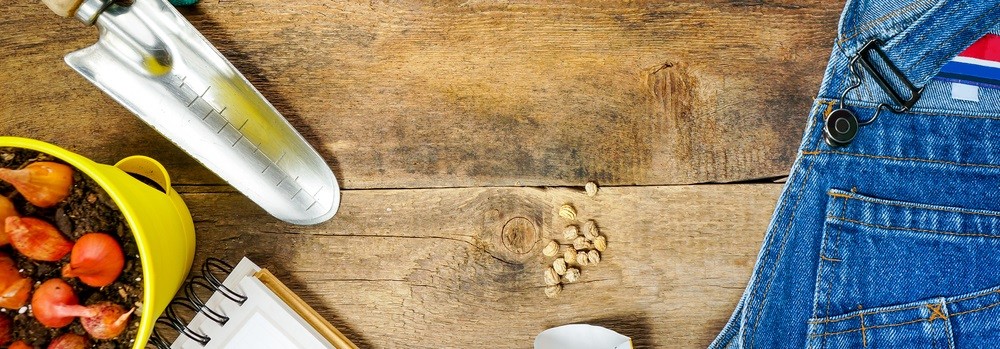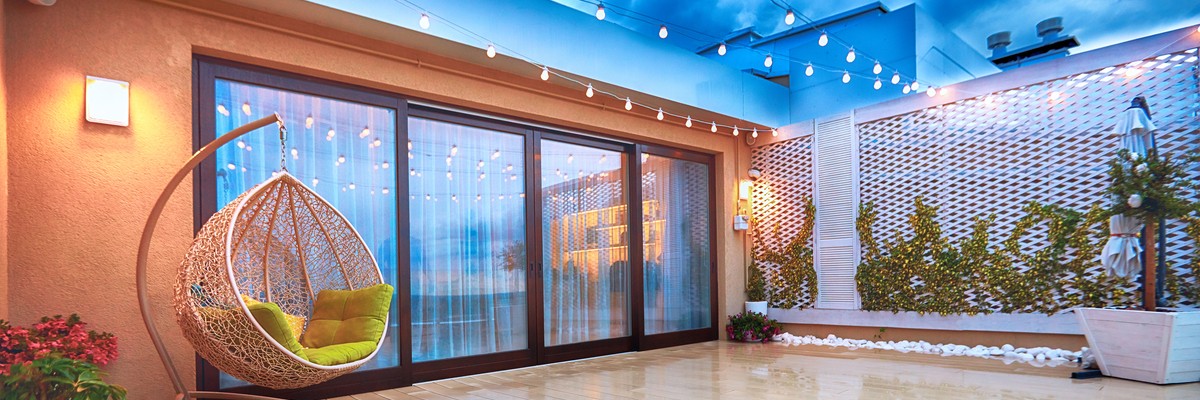Table of Contents
Quality Service Guarantee Or Painting Free

Get a rental agreement with doorstep delivery

Find the BEST deals and get unbelievable DISCOUNTS directly from builders!

5-Star rated painters, premium paints and services at the BEST PRICES!
Loved what you read? Share it with others!


Submit the Form to Unlock the Best Deals Today
Help us assist you better
Check Your Eligibility Instantly

Experience The NoBrokerHood Difference!
Set up a demo for the entire community
How to Start a Terrace Garden 2025
Table of Contents
If you have a green thumb and always wanted a garden; but have no space for it – try a Terrace Garden! This is the best way to have your very own garden, and you can even grow your own chemical and pesticide-free vegetables when you start terrace farming.
What Do You Need?
You will need to plot out the area that you need and then see to it that it’s waterproof
• Containers to start planting
• Adequate sunlight for your plants to grow
• A water source and proper drainage
• Compost
• Seeds or saplings
• Gardening tools
Quality Service Guarantee Or Painting Free

Get a rental agreement with doorstep delivery

Find the BEST deals and get unbelievable DISCOUNTS directly from builders!

5-Star rated painters, premium paints and services at the BEST PRICES!

How Do You Start?
Choose containers, these could be plastic, clay, cement, wooden crates or even pots. They should be strong enough to hold your soil, plant, and water as well as have adequate space for your plant to grow (unless you wish to re-pot it soon).
Create your own compost, for this, you’ll need regular soil, compost coir peat (or sand) and vermicompost in equal quantities. Mix them together and place it in the containers with enough room for your sapling.
Start with quick-growing and hardy plants such as tomato, green chili or coriander for the best and most positive results.

Plan the Layout of the Home Terrace Garden
Before you set up your home terrace garden there are a few things you need to check for like wind speeds, water source, water drainage, etc on the slab. Plan the pattern of your terrace garden after inspecting the roof slab. The placement of various pots as well as space for recreational activities must be meticulously arranged. Because terrace gardens are smaller than traditional gardens, efficient use of the limited space is essential. Examine the regions that are shaded and those that receive the most sunlight during the day.
You can either cover the entire ground with dirt to create a lawn, or you can fill plant pots with soil and grow plants in them.
Because a terrace has fewer square feet than a typical garden, it is vital to arrange the space usage correctly. Look for regions that are shaded, as well as areas that get sunlight for most of the day. If you're going to have a lounge area on the terrace, decide where it will go. Plants need to be shielded from direct sunshine in the summer, and you may do so by creating a shade. Choose a location for this.
Select the Plants For Your Terrace Garden
This is a fascinating phase in the process of creating a terrace garden. Plants of many types are available, although fibre-rooted plants are preferred over deep-rooted plants, which require more soil depth and thus more weight. Choose plants that will thrive in the shade of your roof. Weak plants that need less sunshine should be kept in the shade. Plants that demand a lot of sunlight, on the other hand, should be placed in non-shaded regions. You can get the seeds for the plants you need from local nurseries or order them online.
If you wish to cultivate veggies, start with those that grow quickly and take little effort, such as coriander, fenugreek, chilli, capsicum, etc. If your terrace has pillars, you can use them to support climbers such as bottle gourds and cucumbers.
Begin with jasmine, rosemary, periwinkle, lavender, primrose, and other terrace gardening plants.
Selecting The Perfect Soil And Containers
The soil should be chosen in accordance with the plants. Different types of soil must be used in the pots depending on the plants you've chosen. If you're going to cover the entire roof, the soil you choose must be able to support all of the plants you've chosen. Terrace gardens require the use of pots or plant containers. Depending on your needs, you can use clay pots or cement pots. You may also purchase raised beds for your terrace garden as an alternative to standard garden beds. Raised beds have a significant advantage over pots in terms of width. As a result, they are the best choice for growing veggies. Vertical gardening can be aided by purchasing trellis for creepers. You can also embellish your terrace garden by hanging some little flowering plants.
Maintenance
Once you plant your sapling it’s important to keep it well hydrated. Overwatering can lead to washing out all the minerals that are in the soil. If you’re unsure about how much water you need to use, just water it every alternate day. It would help if you kept an eye out because the amount of water required varies depending on the season and location of your garden too

If the leaves of your plant are looking dry or droopy, then you need to water it more often. If the plant looks healthy and the topsoil is moist, you need not worry about watering it too often. In summer, you might need to water your plants once or even twice a day. During winters, you can reduce the number of times you water your plants.
When it’s monsoon time you’ll need to monitor your plants closely, especially if they are in the direct path of the heavy rains. Why do you ask? This is because the life-giving nutrients in the soil get easily washed away and need to be regularly replaced.
I suggest you start small, once you can successfully maintain a few plants, then you can move on to more variety. Flowering plants are a little harder to maintain and take longer to give you desired results. Remember, to have a successful garden you need to have patience and perseverance, don’t give up at the first sign of trouble.
If you’re looking for a house with more space for a garden or a house with a bigger terrace and a lawn, just visit NoBroker by clicking below. We have plenty of houses for you to choose from and you never have to pay any brokerage!

FAQ's
Ans. It's also known as a roof garden, and it's a garden where vegetables, fruits, or flowers are cultivated on building terraces, balconies, or rooftops. Due to space constraints, the kitchen garden, which was once a standard in every Indian home, has now been relocated to the roof and is now known as a terrace garden. Land scarcity and rising expenses have also contributed to its growing appeal.
Ans. You could start with those that grow quickly and take little effort, such as coriander, fenugreek, chilli, capsicum, etc. If your terrace has pillars, you can use them to support climbers such as bottle gourds and cucumbers.
You can also try jasmine, rosemary, periwinkle, lavender, primrose, and other terrace gardening plants.
Ans. Plants can be grown in old paint cans, broken buckets, wooden crates, kitchen utensils, and coconut shells, among other things.
Ans. One crucial step is to make the terrace's ground water-proof / water-resistant so that watering plants does not cause harm to the structure.
It's a simple operation with a variety of water-proofing materials to choose from. An insulation layer must be placed atop the waterproofing layer to protect it.
Ans. Plants with fibrous roots can not harm the roof, but tap roots (such as mango) can penetrate the roof and cause damage by expanding their roots into the framework. Seeds carried by the wind or birds may germinate and take root on the roof itself. Check for them and get rid of them.
Recommended Reading

The Benefits and Challenges of Using Bamboo as a Building Material
December 27, 2024
6602+ views

Modern Rooftop Design Ideas to Transform Your Space
January 2, 2024
3539+ views

10 Best Pampas Grass Decor Ideas
December 4, 2023
1848+ views

15 Trending Bamboo Furniture Designs
December 4, 2023
2520+ views

Flowering plants for the Balcony Gardens
October 11, 2023
2099+ views
Loved what you read? Share it with others!
NoBroker Interiors Design Testimonials
Most Viewed Articles

Best Place to Invest in Bangalore: Top Areas for Property Investment in 2025
December 20, 2024
14751+ views

10 Best Places for Real Estate Investment in Pune in 2025
December 24, 2024
12028+ views

RERA Bill 2016 Guide - Real Estate Regulation and Development Act 2016
December 1, 2016
5742+ views

Property and Your Star Sign In 2025
January 17, 2017
4697+ views

Buying or Renting a House: Which is Right for You?
February 12, 2020
4564+ views
Recent blogs in
10 Best Places for Real Estate Investment in Pune in 2025
December 24, 2024 by Vivek Mishra
Best Place to Invest in Bangalore: Top Areas for Property Investment in 2025
December 20, 2024 by Prakhar Sushant
How to Choose the Top 10 Cities in India 2025 to Invest in For NRIs
December 20, 2023 by NoBroker.com
5 New Decor Trends in India This Year
August 31, 2023 by NoBroker.com
Is It a Good Time to Buy a House? The Answer Is Yes! Here’s Why
August 24, 2023 by Vivek Mishra




Join the conversation!